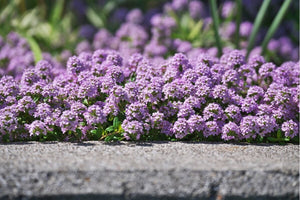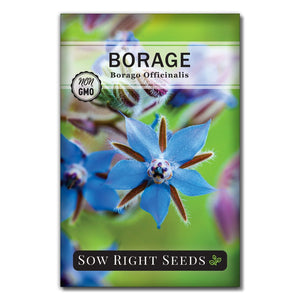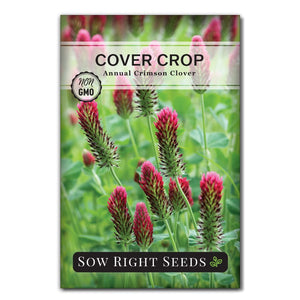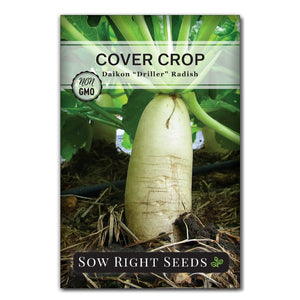More Than Mulch: 6 Ways to Use Fall Leaves in Your Garden
Improving soilWhether you have a yard full of leaves or just a few blowing through in the wind, we’ll show you what you can do with leaves. So let those leaves fall where they may and then gather them up to create an even better garden.

What To Do With Leaves
When you’re a gardener, you pay attention to the seasons. You know there’s a season for planting and a season for harvesting. The harvesting season is also a good time to consider ways to improve your garden soil.
The abundance of fall leaves will have you wondering what you can do with all those leaves. There are ways to embrace and use this seasonal change to your garden’s advantage.

6 Things to Do With Fall Leaves
1 - Add Leaves to Home Compost
Home composting is a great way to use leaves. If you are already composting kitchen scraps and yard waste, you can also add your leaves. Just be sure to break them down before adding them to your compost bin. Then remember to keep a good ratio of greens and browns.
2 - Make Leaf Mold
Leaf mold is a valuable garden amendment that can improve any garden soil. It only uses leaves, so you can create this soil conditioner even if you don’t have a compost bin. Making leaf mold takes some time, but it is well worth the minimal effort.

3 - Use Leaves as Garden Mulch
Mulch is a great way to keep weeds out and retain moisture. A layer of chopped-up leaves creates an inexpensive and beneficial mulch. It's important to use leaves that have been broken up so that they don’t just create a barrier that produces mold and prevents moisture from reaching the soil.
4 - Improve Clay Soil
Once you’ve broken up whole leaves, you can add them directly to the soil. This can be an excellent amendment to improve clay soil. When adding leaves to the soil, use small amounts at a time so that they will decompose faster.

5 - Leaf Layer for No-till Gardens
A layer of leaves several inches thick is precisely what you need for lasagna or no-till gardening. With this type of gardening, the layer of leaves can be thicker than in other applications. You can let a layer of leaves smother weeds and help create better soil for spring planting.
6 - Donate Leaves to Local Green-cycling
If you have more leaves than you can use to improve your garden soil, use them to help someone else’s garden. Many communities have facilities for accepting yard waste and turning it into compost. When your own garden has enough leaves, you can bag up your excess and take them to your nearest organic waste center.

Raking and Gathering Leaves
Raking leaves can be a tiring job. Especially if you have a large area with lots of trees.
Would it be so bad to just let them stay where they land?
You will want to rake up leaves off your lawn and garden for a few important reasons.
- Leaves take a long time to break down.
- When large amounts of leaves gather, they can compact into a mass that prevents water from passing through.
- A thick layer of leaves will also block sunlight and smother grass and plants.
However, leaves have many benefits when gathered and used appropriately. Fall leaves can improve soil texture and add nutrients to the soil.

Tips for raking and gathering leaves:
Using a few helpful tips will make your leaf gathering an easier chore.
- Put out a large tarp and rake all the leaves onto the tarp. This will make the job go more quickly. You can drag the tarp to the places you are raking. Then when you are done, gather the corners and take the leaves where you need them or put them into bags. This method avoids all the stooping, twisting, and bending.
- Another quick way to gather leaves is to use a lawnmower with a bagging attachment. Depending on the amount of leaves, you may have to empty the bag often, but it’s much easier than raking.
- Chop up leaves for better and faster decomposition. Once you have gathered your leaves, the next step is to break them up or crush them into smaller pieces. Leaves left whole take a long time to break down. In a forest, we can let nature take its own sweet time. But in our gardens, we can help speed things up. Chopping up leaves will make them easier to use in multiple ways.
How to Break up Leaves
- Run a mulching mower over them
- Run a regular mower over them
- Put them in a tall garbage can and use a string trimmer to chop them up.
- Run and jump and play in them.

A couple of reminders about using leaves in your garden: it’s recommended that you avoid using laurel, eucalyptus, and black walnut leaves as mulch because of their toxins.
Also, keeping leaves out of storm drains is important as they can cause blockages.
Fall leaves are a welcome and beautiful sight. But sometimes, it can be a challenge to know what to do with all those leaves. Now that you know how leaves can benefit your garden, you’ll enjoy watching them fall to the ground. Try one of these ways to use leaves this fall and see what a difference it makes in your garden.
If you found this information helpful, share it with your gardening friends!









Leave a comment